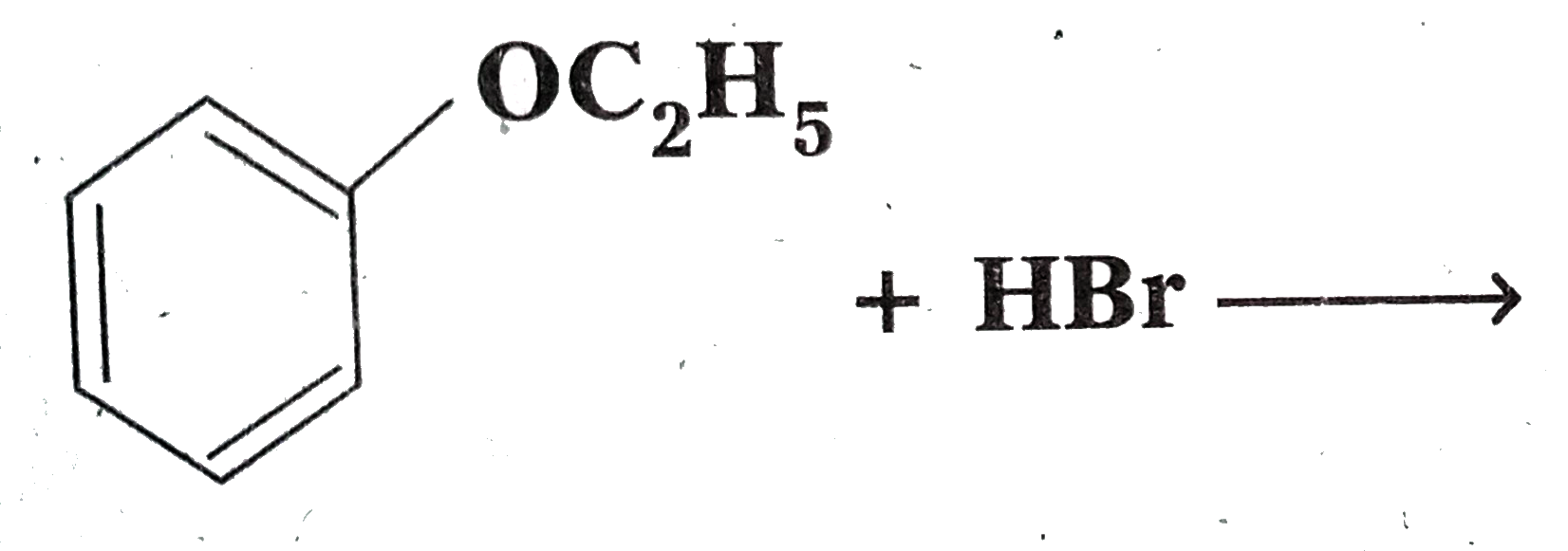Complete Solutions to SHORT ANSWER QUESTIONS of chapter ORGANIC COMPOUNDS CONTAINING C,H AND O of Class 12 book with complete answers and questions
| Class 12 | CHEMISTRY |
| Chapter | ORGANIC COMPOUNDS CONTAINING C,H AND O |
| VIKRAM | SHORT ANSWER QUESTIONS |
| Number Of Questions | 57 |
| Academic Year | 2023-24 |
Draw the structure of all isomeric alcohols of molecular formula `C_(5)H_(12)O` and give their IUPAC names and classify them as primary , secondary and tertiary alcohols.
View SolutionWhile separating a mixture of ortho and para nitrophenols by steam distillation , name the isomer which will be steam volatile . Give reason.
View SolutionGive the equations for the preparation of phenol from Cumene.
View SolutionWrite the mechanism of hydration of ethane to yield ethanol.
View SolutionExplain the acidic nature of phenols and compare with that of alcohols.
View SolutionWrite the products formed by the reduction and oxidation of phenol.
View SolutionEthanol with `H_(2)SO_(4)` at 443 K forms ethene while at 413 K it forms ethoxy ethane. Explain the mechanism .
View SolutionAccount for the statement : Alcohols boil at higher temperature then hydrocarbons and ethers of comparable molecular masses.
View SolutionExplain why in anisole electrophilic substitution takes place at ortho and para positions and not at meta position.
View SolutionWrite the products of the
 reaction.
reaction.
View SolutionWrite the products of the
 reaction.
reaction.
View SolutionExplain why phenol with bromine water forms 2,4,6-tribromophenol while on reaction with bromine in `CS_(2)` at low temperature forms para-bromophenol as the major product .
View SolutionExplain the acidic nature of phenol.
View SolutionExplain the electrophilic substitution reaction of Anisole.
View SolutionWrite equations of the Alkylation of anisole reaction.
View SolutionWrite equations of the Nitration of anisole reactions.
View SolutionWrite equation of the Friedel-Crafts acetylation of anisole reaction.
View SolutionIllustrate hydroboration -oxidation reaction with a suitable example.
View SolutionWrite any two methods for the preparation of phenol.
View SolutionWrite the structure of the 2-Methyl butan -1-ol compound.
View SolutionWrite the structure of the 2,3-diethyl phenol compound.
View SolutionWrite the structure of the 1-ethoxy propane compound.
View SolutionWrite the structure of the Cyclohexyl methanol compound.
View SolutionWrite the equations of any aldehyde with Fehlings reagent.
View SolutionWhat is Tollens reagent ? Explain its reaction with Aldehydes.
View SolutionWrite the oxidation products of : Acetaldehyc, Acetone and Acetophenone.
View SolutionExplain why Aldehydes and ketones undergoes nucleophilic addition while alkenes undergoes electrophilic addition though both are unsaturated compounds.
View SolutionWhich the IUPAC name of `CH_(3)CH_(2)CH(Br) CH_(2)COOH`
View SolutionWhich the IUPAC name of `Ph. CH_(2)COCH_(2)COOH`
View SolutionWhich the IUPAC name of `CH_(3).CH(CH_(3))CH_(2)COOC_(2)H_(5)`
View SolutionArrange the following in the increasing order of their acidic strength :
Benzoic acid , 4-Methoxybenzoic acid, 4-Nitrobenzoic acid and 4-Methylbenzoic acid.
View SolutionDescribe the Cross aldol condensation .
View SolutionDescribe the Decarboxylation.
View SolutionExplain the role of electron withdrawing and electron releasing groups on the acidity of carboxylic acids.
View SolutionDraw the structure of the Acetaldehydedimethylacetal .
View SolutionDraw the structure of the ethylene ketal of hexan-3-one.
View SolutionDraw the structure of the methyl hemiacetal of formaldehyde.
View SolutionAn organic compound contains `69.77%` carbon, `11.63%` hydrogen and rest oxygen. The molecular mass of the compound is 86. It does not reduce Tollens’ reagent but forms an addition compound with sodium hydrogensulphite and give positive iodoform test. On vigorous oxidation it gives ethanoic and propanoic acid. Write the possible structure of the compound.
View SolutionExplain Nucleophilic addition reaction mechanism of aldehydes and ketones.
View SolutionWrite any two methods for the preparation of Aldehydes.
View SolutionWrite any two methods for the preparation of Ketones.
View SolutionExplain Clemenson's reduction and Wolf Kishmer reduction reactions.
View SolutionWhat is haloform reaction ? Give equation .
View SolutionWhat is Cannizaro reaction ? Give equation .
View SolutionWhat is HVZ reaction ? Give equation.
View SolutionWrite any three methods for the preparation of Carboxylic acid.
View SolutionExplain Ring substitution reactions of aromatic carboxylic acids.
View SolutionHow do you prepare the Acetyl chloride compound from acetic acid ?
View SolutionHow do you prepare the Acetamide compound from acetic acid ?
View SolutionHow do you prepare the Acetic anhydride compound from acetic acid ?
View SolutionHow do you prepare the Ethyl alcohol compound from acetic acid ?
View SolutionExplain how methyl ketones are distinguished from other ketones . Write the equations showing it .
View SolutionWrite the equations showing the conversion of the 1-phenylpropane to Benzoic acid along with reagents.
View SolutionWrite the equations showing the conversion of the Benzamide to Benzoic acid along with reagents.
View SolutionWrite the equations showing the conversion of the Ethyl butanoate to Butanzoic acid along with reagents.
View SolutionWrite the products and reagents needed for the 3-Nitrobromobenzene to 3-Nitrobenzoic acid conversions .
View SolutionWrite the products and reagents needed for the 4-Methylacetophenone to Benzene-1-4-dicarboxylic acid conversions .
View Solution
SHORT ANSWER QUESTIONS questions and complete solutions for chapter ORGANIC COMPOUNDS CONTAINING C,H AND O of VIKRAM PUBLICATION ( ANDHRA PUBLICATION) of Class 12